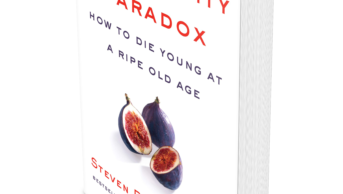
Pioppi is a small, coastal Italian village in the south of the country with a population of less than 200 people. Although the village is situated in a relatively poor area of Italy, its population is rich in health and this forms the backdrop for a new book by a cardiologist (Dr Aseem Malhotra) and an acclaimed film maker. Malhotra is a prominent leader of the anti-sugar campaign and the book has a strong “anti-sugar” message running through it.
It begins with a description of the tranquillity the authors experienced in Pioppi and comment on how it became the home of Ancel Keys, the American nutritionist responsible for the “anti-fat” dietary message that represents the antithesis of the book.
The first chapter sets the scene, describing how a poor diet is responsible for more health and disease problems than factors such as smoking and physical inactivity. This is followed by a justification of why it is sugar, rather than fat, that is the villain of the
nutritional world. However, this contention is not new and was debated between Keys and John Yudkin more than 50 years ago.
Yudkin was an English physiologist who believed that it was sugar rather than fat that we should be wary of, though Keys was a more persuasive individual and subsequent international health policies recommended that we cut back on our intake of fat. Yudkin made his case against sugar in his book ‘Pure, white and deadly’, first published in 1972, although it has been largely ignored until more recently.
The idea that fat can clog our arteries is a powerful one that has become ingrained in our collective consciousness, so much so that we have developed a fat phobia, as evidenced by the wide range of “low fat” alternatives on supermarket shelves. In fact, the authors go to great lengths to dispel this artery-clogging property of fat, citing several important studies which effectively dispel the myth.
By chapter 7, it becomes clear that the real cause of heart disease is insulin resistance and inflammation — not the acute inflammation associated with an injury, but the chronic form which develops as a result of the continual assault on our bodies from a poor diet, smoking, physical inactivity and perpetual stress. Moreover, the authors point out how insulin resistance has been shown to be an independent risk factor for stroke, hypertension, heart attacks and cancer.
The second and third sections of the book consider the authors’ top-ten foods and, for some bizarre reason, describe their eating habits. There are no HIIT protocols, merely a range of Tai Chi exercises that should be practised (one per day) for 21 days. The book concludes with a wide range of delicious-looking recipes for breakfast, lunch and dinner.
Rod Tucker
References
The Pioppi Diet. A 21-day lifestyle plan, by Aseem Malhotra and Donal O’Neill. Pp 348. Price £8.99. London: Penguin books; 2017. ISBN 978 1 405 93263 9


